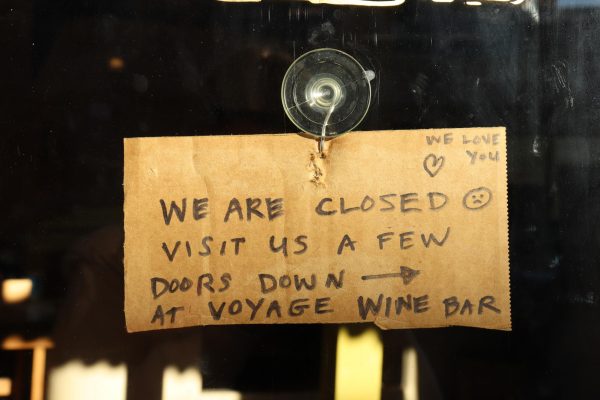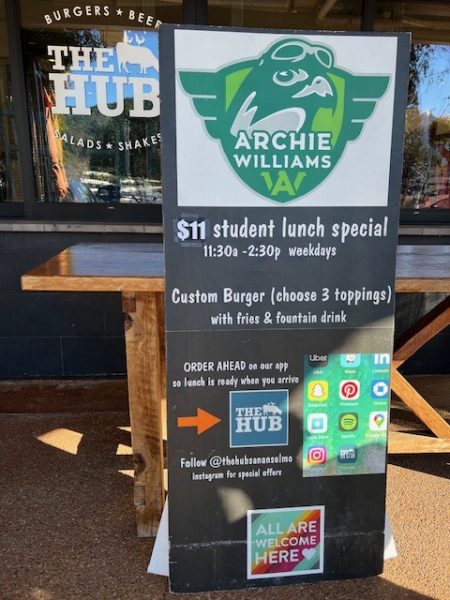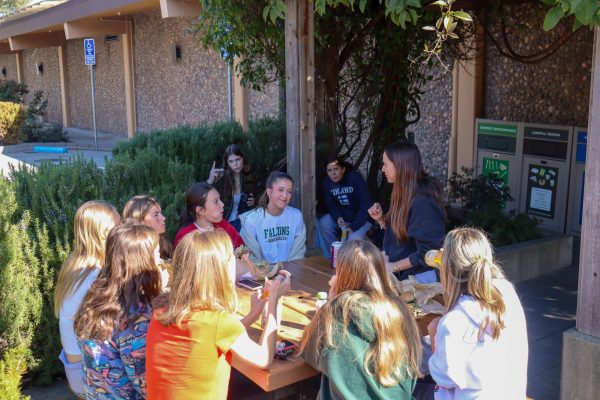Teachers express conflicted feelings about start of hybrid learning
An empty hallway at HS 1327 on February 25, the last Friday before the start of hybrid learning.
While hybrid learning could be the answer to finally transitioning back to school, there are still factors of concern for some. Hybrid learning is a learning scenario in which a portion of students participate in school at home, via Zoom, while the others learn in the physical classroom. This chance to return to some sense of normalcy during the pandemic may also cause increased stress for teachers and staff.
Hybrid learning provides a chance for students and staff to experience social interaction that they might not otherwise. Due to the pandemic, teens went from going to school and spending time with friends everyday, to sitting at home in front of a computer. This is especially difficult because the teenage years are crucial for social development. In fact, according to The National Center for Biotechnology Information, “Adolescence is a time of profound psychological and social transformation.”
“That social component of school is so important. In some cases I would say it’s a lot more important than the content you learn in school,” High School 1327 (HS 1327) PE and Advancement Via Individual Determination (AVID) teacher Rene Ayala said.
In addition, teachers sit at zoom screens full of black boxes instead of faces. Many of these teachers have never met, or even seen, their students. Hybrid learning, however, is a chance for teachers to meet many of their students.
“I’m just really excited to try to make the connections that I love making as a teacher…I think I’ll be able to do that in a way I haven’t been able to do in distance learning,” HS 1327 history teacher Dan Freeman said.
Other teachers feel the need to see their students as well.
“It’ll be nice to see the kids in person,” Hannah Lingrell, a spanish teacher at HS 1327 said.
In the hybrid learning model at HS 1327, there are three groups of students assigned to different cohorts. Each student returning to hybrid school is either in cohort Green, Gray, or Glitter.
Each cohort contains around 400 students, which will be the amount on campus each day. This is compared to the 1358 students that attended the school under normal, pre-pandemic circumstances.
“There’s not a lot of other options…It’s going to be yet another learning curve. We are just going to need to be super patient with our teachers,” HS 1327 Principal Liz Seabury said.
Hybrid learning is an experience that no one has yet to undergo. Therefore it is unsure what to expect. One possible bump in the road is the new technology that comes with hybrid learning.
With part of the class in the classroom and the others on Zoom, Freeman fears it will be a struggle in the beginning.
“Is it going to have to be one of those things where insead of being present with the people in the room physically, I have to run back and forth and do technological things?” Freeman said.
Another fear for the teachers is the risk of sickness. With the COVID pandemic still at large, safety is a big concern.
“It raises the risk of infection…That’s what gives me pause,” Ayala said.
Even with the extra precautions, there are still plenty of risks that one takes going to school in a global pandemic.
“I’ve been doing this for fifteen years, this feels like my first year of teaching all over again,” Lingrell said. Hybrid learning may be a new experience for everyone, but HS 1327 administration hopes for the transition to be as seamless as possible. While there may be unexpected surprises, this could be a step forward for everyone.

Izzy is a sophomore, in her second year of journalism. She enjoys reading fantasy books, her family and eating anything with sugar. You can find her at...







